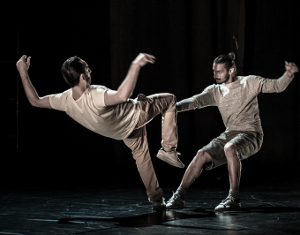The Asheville-Brevard Combined Statistical Area (five counties with a population now in excess of 400,000) has two established professional orchestras, the Asheville Symphony Orchestra and the Hendersonville Symphony Orchestra. Nationwide there are two volunteer orchestras for every professional group, so it is only natural that in Asheville there should be at least one volunteer orchestra. The eight-year-old Blue Ridge Orchestra under the direction of Ronald Clearfield has established its niche. The orchestra uses the slogan “Music for the People” and makes orchestral music accessible to the community through friendly programming and low ticket pricing.
The first concert of the Blue Ridge Orchestra season leveraged the public’s fascination with Luciano Pavarotti with a program dedicated to the late great tenor. Interspersed with four operatic overtures were nine tenor arias performed by William Martin of Western Carolina University’s faculty. A graduate of Northwestern University with a doctorate in performance from UNC-Greensboro, Martin’s past accomplishments include winning the Bel Canto Foundation Competition in Chicago, winning the Metropolitan Opera Regional Audition in North Carolina, studying in Italy with Tito Gobbi and singing more than 400 performances during a nine-year residency in Germany.
Preceding each aria and each overture were anecdotes and commentary by “emcee” Mountaine Mort Jonas. I appreciate the intention of having an official master of ceremonies who is an experienced actor, especially in improv theater, but Mr. Jonas overdid it. Rather than appealing to a broader audience, some of his reminiscences were too personal, and too likely to reinforce a stereotype of Jonas as an opera snob rather than an advocate for the people. It was useful to have him explain the context of an aria within its opera, to describe its message, and in some cases even to deliver an English translation of the entire text. A few anecdotes might have been good leavening to avoid pedantry in this explanatory task, but far too many of his stories were irrelevant to the programmed works.
Wagner’s Overture to Die Meistersinger showed the orchestral strings relaxed and accurate, but with a rather thin tone in the upper voices. The brass section was on their mettle in this and in the ensuing aria “In fernem Land” from Lohengrin. Martin made his entry with a rich fruity tone that demonstrated the power of a Wagnerian heldentenor. It rather made one wish that more German works were in store, but we rapidly moved through the popular “Ach, so fromm” from von Flotow’s Martha and on to the Italian repertoire so beloved by Pavarotti fans.
All the old favorites were here, and Martin did them justice. His intonation was remarkably fine, he offered a melodramatic foreboding where called for, and there was a little catch in his voice when the tenor was facing death. It was heaven for those who revel in Rossini, Verdi and Puccini. A brief detour to France (an Offenbach overture and a Massenet aria) began the second half of the program and then it was back to Italy, concluding with two encores, one being a repeat performance of “Nessun Dorma,” Pavarotti’s signature offering from Puccini’s Turandot.
The orchestra accompanied well, with some excellent clarinet work in “E lucevan le stelle” and with the oboe redeeming an earlier lackluster performance by some fine playing during the Rossini Overture to La Gazza Ladra. Clearfield communicates well, but the orchestra is sometimes buried in their music and does not always fully respond. An example was in “Ach, so fromm” when Clearfield’s attempt to subtly increase the tempo was met with some passive resistance.
The orchestra could be improved with additional strength in the violin sections, whose limited numbers at time were not in balance with the rest of the orchestra. But making allowances for this being a volunteer orchestra, it was overall a credible and pleasing evening for both the seasoned orchestra fan and the general audience that Clearfield is successfully reaching.












